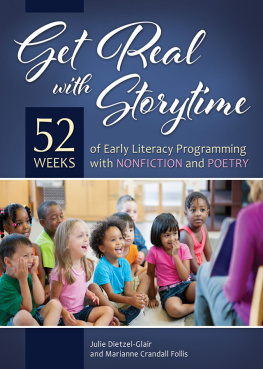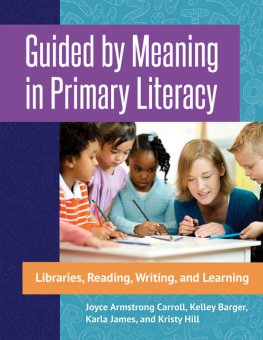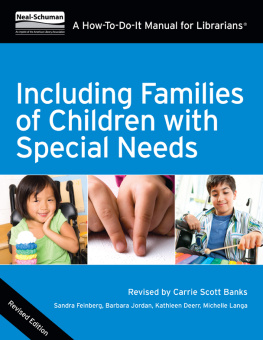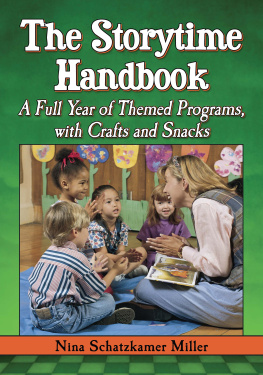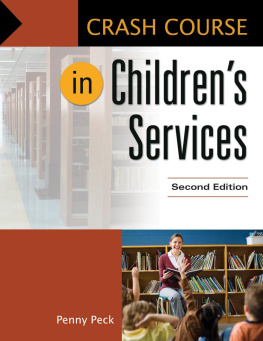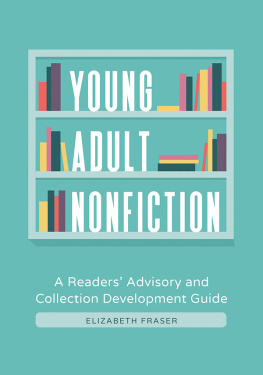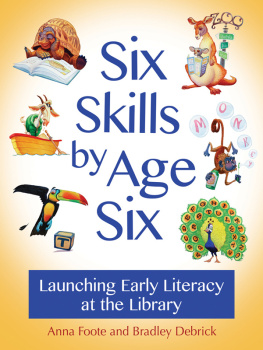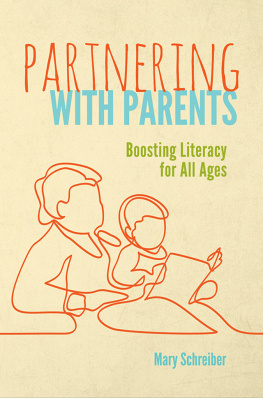Get Real with Storytime
Get Real with Storytime
52 Weeks of Early Literacy Programming with Nonfiction and Poetry
Julie Dietzel-Glair and Marianne Crandall Follis
Copyright 2016 by Julie Dietzel-Glair and Marianne Crandall Follis
All rights reserved. No part of this publication may be reproduced, stored in a retrieval system, or transmitted, in any form or by any means, electronic, mechanical, photocopying, recording, or otherwise, except for the inclusion of brief quotations in a review, without prior permission in writing from the publisher.
Library of Congress Cataloging-in-Publication Data
Names: Dietzel-Glair, Julie, 1976 author. | Follis, Marianne Crandall, author.
Title: Get real with storytime: 52 weeks of early literacy programming with nonfiction and poetry / Julie Dietzel-Glair and Marianne Crandall Follis.
Description: Santa Barbara, CA: Libraries Unlimited, an imprint of ABC-CLIO, LLC, [2016] | Includes bibliographical references and indexes.
Identifiers: LCCN 2015025224| ISBN 9781440837388 (paperback) | ISBN 9781440837395 (ebook)
Subjects: LCSH: Childrens librariesActivity programsUnited States. | StorytellingUnited States. | Libraries and preschool childrenUnited States. | Poetry and children. | Childrens literatureBibliography. | BISAC: LANGUAGE ARTS & DISCIPLINES / Library & Information Science / General.
Classification: LCC Z718.3 .D545 2016 | DDC 027.62/51dc23 LC record available at http://lccn.loc.gov/2015025224
ISBN: 978-1-4408-3738-8
EISBN: 978-1-4408-3739-5
20 19 18 17 16 1 2 3 4 5
This book is also available on the World Wide Web as an eBook.
Visit www.abc-clio.com for details.
Libraries Unlimited
An Imprint of ABC-CLIO, LLC
ABC-CLIO, LLC
130 Cremona Drive, P.O. Box 1911
Santa Barbara, California 93116-1911
This book is printed on acid-free paper 
Manufactured in the United States of America
Contents
Storytimes are one of the biggest perks of being a childrens librarian. You get to connect with children. You get to read fun books. You get to act sillyand get paid to do it.
Planning storytime can be just as much fun as the actual program; as you look through stacks and stacks of well-illustrated picture books that make you chuckle or even tear up. But what about the other side of the childrens room? The side where the stacks are typically taller and the books are often thicker? What about the nonfiction books filled with fascinating photographs and interesting facts? What about the rhythm, rhyme, and delicious language of poetry? Do you include those books in your storytime? You should.
Many children (and adults), especially boys, prefer nonfiction to fiction. They like facts and true stuff. By reading nonfiction in storytime you can connect with more children. Including poetry in storytime opens the doors for a love of words in children. Too many children dislike poetry units in school, but exposing them to poetry at an earlier age may dissuade those negative feelings. Many educational standards (e.g., Common Core) have a focus beyond fiction. Libraries can link their programs to these standards and better prepare children for school. Reading nonfiction and poetry also educates parents and caregivers about the wealth of resources available for young children. Plus, with so many incredible nonfiction and poetry books being published, it would be a shame not to include them in programming.
This book is for librarians, early educators, and anyone who like to read with children. It is their ticket to adding nonfiction and poetry to preschool storytimes. It is a years worth of programs that include nonfiction, poetry, picture books, rhymes, songs, flannel board, and follow-up activities. Along the way youll find early literacy tips that provide more information about the benefits of various storytime activities. So buckle up and prepare yourself for storytimes that will have kids begging for more.
Tips for Including Nonfiction Books in Storytime
Look for books with large, clear photographs or illustrations. Preschoolers want a visual treat while you share facts about their favorite animal or vehicle. Just like a picture book, you want illustrations that show well across the room. Photographs are ideal, but there are also many quality life-like looking illustrations in nonfiction books. Books that feature cartoony illustrations will provide a level of familiarity to kids who are accustomed to picture books. Uncertain if the illustrations will work in your storytime space? Open up the book and take a few steps back to see if the illustrations are appealing from a distance. As a general rule, books with a larger trim size are going to be seen better by a crowd.
Look for spare text but dont be afraid of a text-heavy book. Books with minimal text are easy because you can simply read the entire book like a story. However, if a text-heavy book has great illustrations, you may be able to read just the captions in order to share the book with a group. Many nonfiction books provide just the right amount of information in headings to be of interest to a crowd. Mark stimulating sentences with Post-it notes and read just portions of a text. Dont forget to make the book available after storytime for a family to check out. While you may have read only portions of the book, a family may wish to delve into it more.
Remember that a challenging vocabulary is your friend. Kids do not need text watered down for them. They will understand many words in context and will be broadening their own word bank at the same time. It is a good idea to look up the correct pronunciation of words and practice them in advance. While everyone (even many three-year-olds) can say Tyrannosaurus Rex , there are many difficult dinosaur names.
Consider the age-appropriateness of a topic. This resource contains 52 topics that preschoolers will enjoy and are suitable for a crowd environment. Kids want to know more about animals and where they go in winter. They are interested in cars and trucks. They love playing in dirt and finding cool rocks. Remember that the mind of a preschooler is like a sponge, and they are capable of understanding more than many people give them credit for. With that in mind, there are certainly topics (an obvious one is death) that three-year-olds may need to learn about; however, storytime is not an appropriate place to introduce that topic. The same consideration goes for your particular community and suitability of topics.
Be aware of outdated facts. You are probably already weeding your nonfiction collection and removing nonfiction books with obsolete information. When choosing a nonfiction book for storytime, double check to be sure that the information is still valid. While the books recommended in this resource are up to date as of publication, it is possible that some of them may become outdated at some point in the future. Who knows, maybe another planet will be knocked off the list.
Avoid didactic or agenda-driven books. This is not a comment on overall collection management as those books often have a place in a library collection. When planning a storytime, message-driven nonfiction and picture books are often poor fits. Children are the ultimate lie detectors; they can tell that there is medicine mixed in with that sugar. Fortunately there are plenty of good nonfiction books out there that are great fits. Hopefully, this book will serve as an introduction to many of them.

